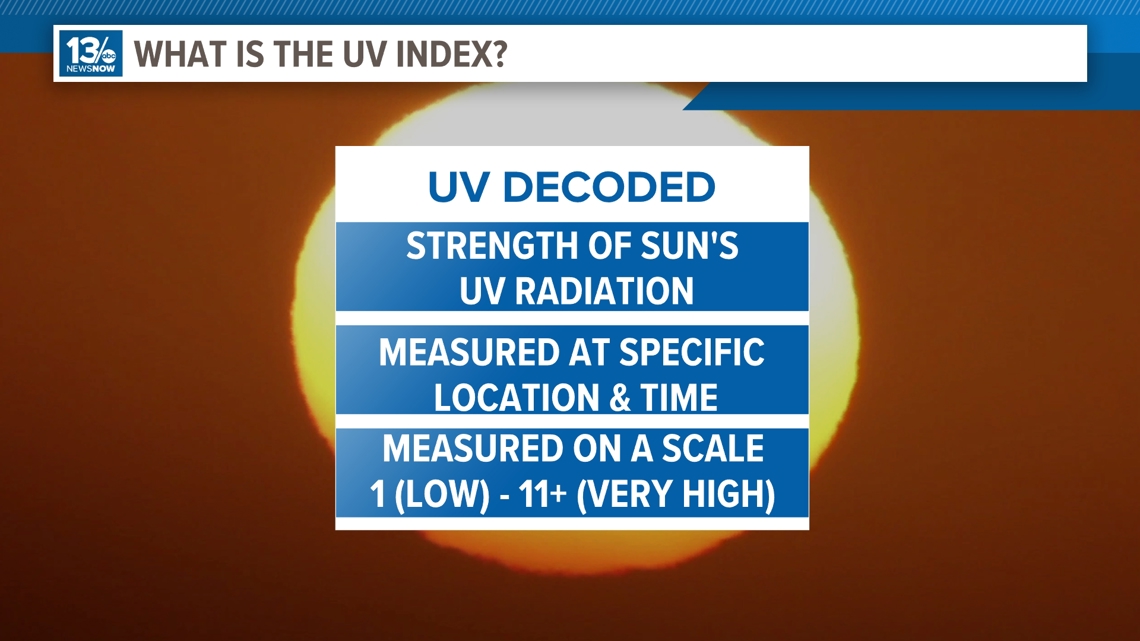NORFOLK, Va. — It’s that time of the year when we incorporate the UV Index into our forecasts to keep you safe from the harmful rays of the summer sun.
But what exactly is the UV Index and how can you use it to make safe decisions about spending time in the sun?
The UV Index represents the amount of the sun’s ultraviolet radiation reaching the earth’s surface, at any instant in time and on a scale from 1 being low to 11 or greater being extreme.


The overall intensity of the sun’s radiation varies according to many different factors.


Thick cloud cover can block most UV radiation, but up to 80% of solar radiation can penetrate light cloud cover so the myth you cannot get a sunburn on a cloudy day is false. In fact, those puffy cumulus clouds that we see on hot, summer days, well, they can actually deflect the sun’s rays and increase the UV radiation.
The time of day plays a big role. Midday is when UV radiation peaks, this is when the sun is highest in the sky. It is typically not as strong in the early morning and late in the afternoon.
Ozone exists in our atmosphere and acts to absorb UV radiation, the higher the level of ozone the lesser the amount of solar radiation that will be able to reach the surface where you and I live.
Land cover such as buildings and tree canopies greatly reduces exposure to UV rays.
Your altitude influences your risk of higher solar radiation. For every 1,000-foot increase in elevation the amount of UV radiation increases by 2% due to the air being thinner.
UV radiation is driven higher or lower based on your latitude. It is strongest at the equator and lessens as you head towards the poles.
The time of the year and the seasons play the ultimate role in the level of UV radiation. It peaks in spring and summer in the northern hemisphere and declines through the fall with the lowest levels in the winter.


So, when you hear the UV forecast during our weather segment remember that the number correlates to how strong the sun’s rays will be that day and that it will be more likely to get a sunburn if you are overexposed.
Too much sun exposure can lead to sun sunburn and skin cancer, sun sensitivity, eye damage and premature wrinkling. Use sunscreen and apply it thoroughly and often. Limit exposure when UV is at its highest, near midday, seek shade, wear sunglasses and loose-fitting, light-colored clothing.
Being conscious of the risks and knowing how to interpret the UV forecast will help you to plan for safe outings in the summer sun.

